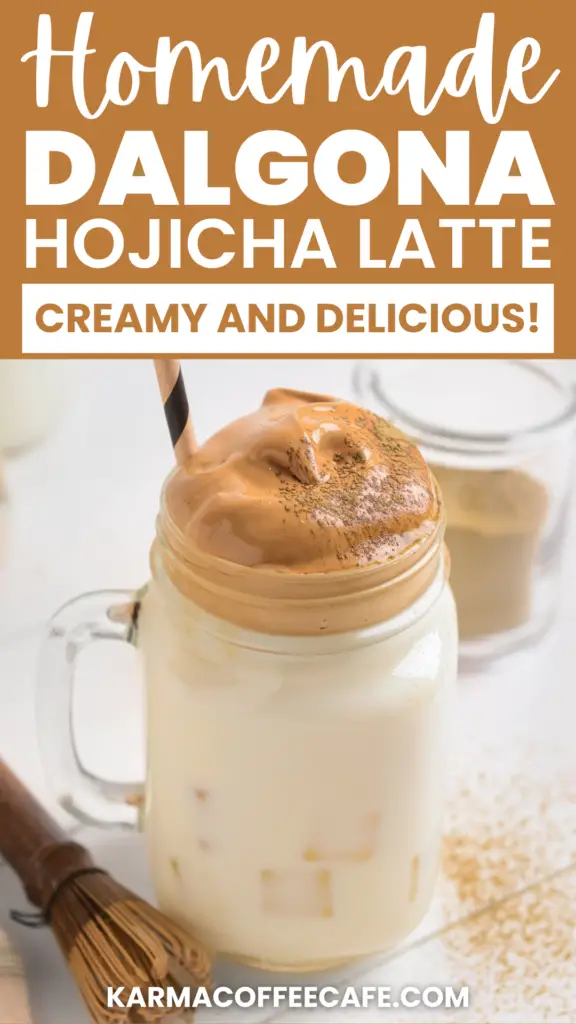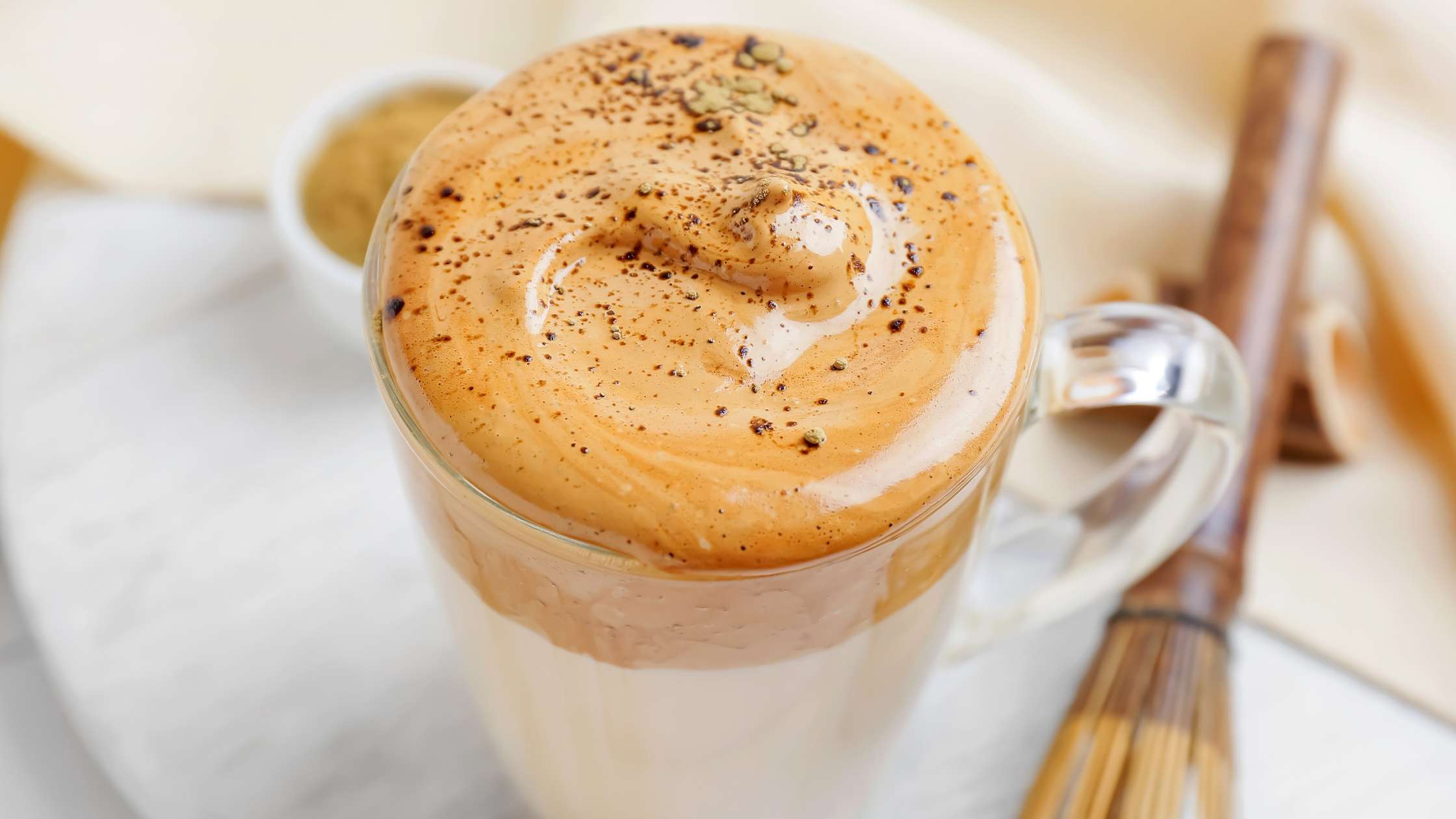Dalgona coffee became a viral sensation for its frothy, whipped texture.
But what if you want the same experience without the caffeine?
Enter Hojicha, a roasted green tea from Japan.
Known for its smoky, nutty flavor, Hojicha is naturally low in caffeine, making it the perfect alternative.
This Dalgona Hojicha Latte combines the best of both worlds.
It has the same fluffy texture as the original Dalgona coffee but with the rich, roasted taste of Hojicha.
This recipe is for you if you’re looking for a smooth, creamy drink that’s easier on the caffeine.
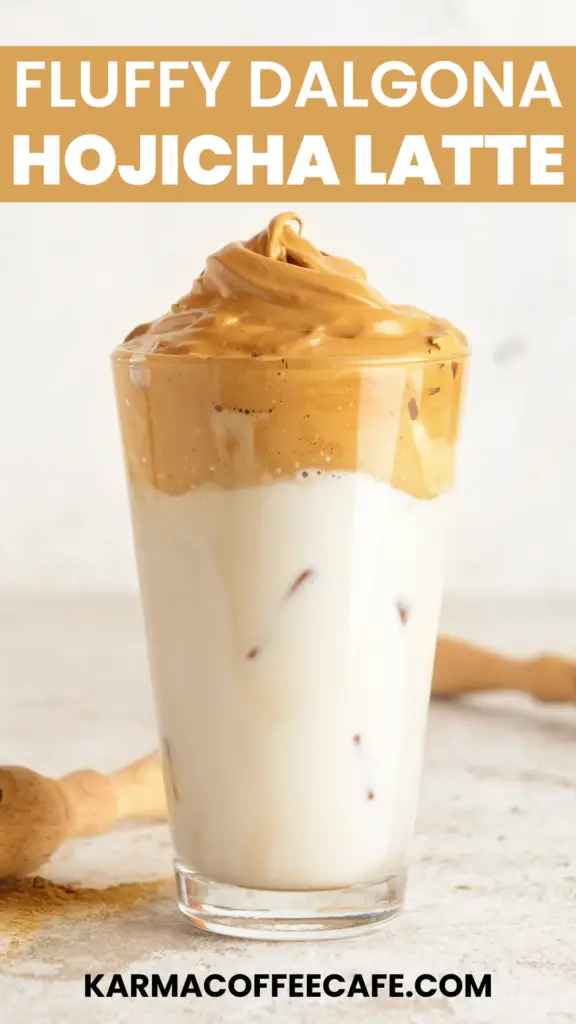
How To Make A Dalgona Hojicha Latte: At A Glance
- Prepare the Whipped Hojicha
- Prepare the Base Latte
- Assemble the Drink
- Enjoy!
Ingredients Needed
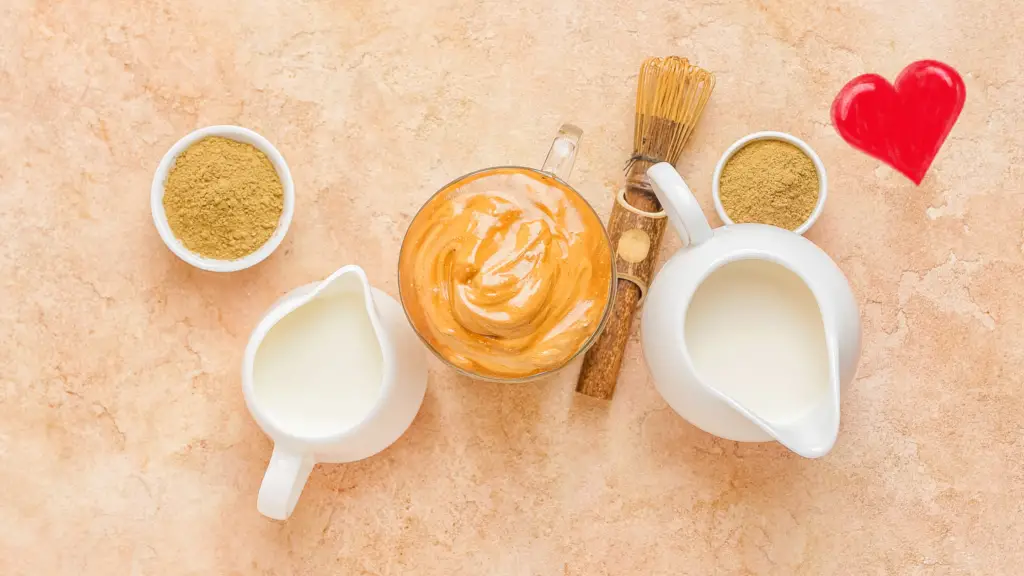
- 2 tsp Hojicha powder – Provides the roasted, nutty flavor.
- 6 tbsp Aquafaba (or 40ml whipping cream for non-vegan option) – Whipped for the signature frothy top.
- 1 tbsp Sugar – To add sweetness to the foam.
- 1 cup Plant-based milk (Oat milk recommended; almond or dairy milk as alternatives).
- Ice (optional) – For an iced version of the latte.
- 1 tbsp Hot water – Used to help dissolve the Hojicha powder.
Step-by-Step Instructions
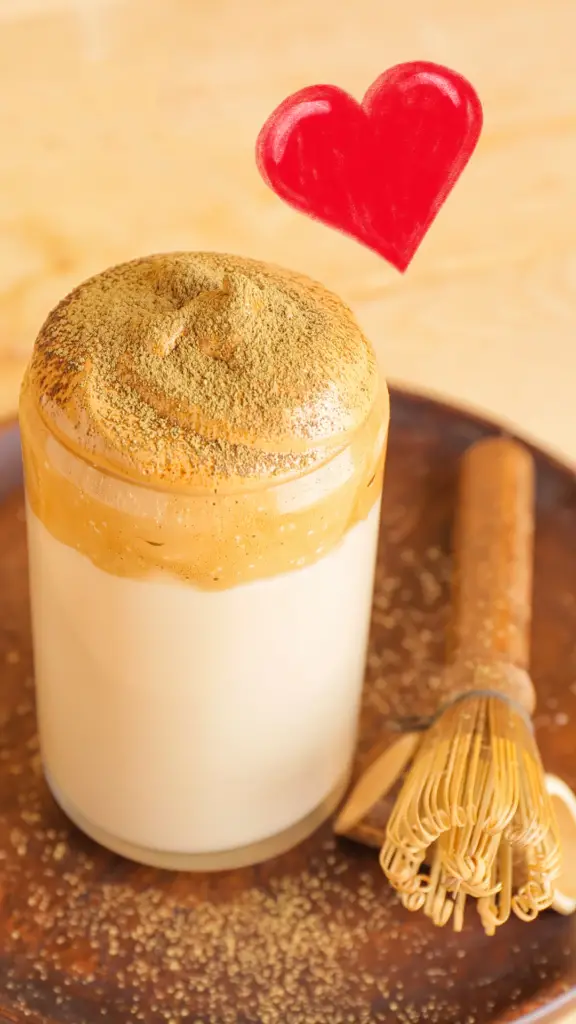
1. Prepare the Whipped Hojicha
- Combine 6 tbsp aquafaba (or 40ml whipping cream), 2 tsp Hojicha powder, and 1 tbsp sugar in a mixing bowl.
- Use a hand mixer or whisk to whip the mixture until light and fluffy. This should take about 3-5 minutes. The texture should resemble soft peaks.
Tips
- Start whipping at a low speed, then gradually increase.
- For the fluffiest foam, ensure your aquafaba is cold.
2. Prepare the Base Latte
- In a separate small bowl, whisk 1 tsp Hojicha powder with 1 tbsp hot water to create a concentrated Hojicha brew.
- Pour 1 cup of plant-based milk (oat milk recommended) into a glass. If you prefer an iced version, add a handful of ice cubes.
3. Assemble the Drink
- Gently layer the whipped Hojicha mixture over the milk to create a beautiful, frothy gradient.
- Stir well before enjoying to blend the rich flavors together.
Why Hojicha?
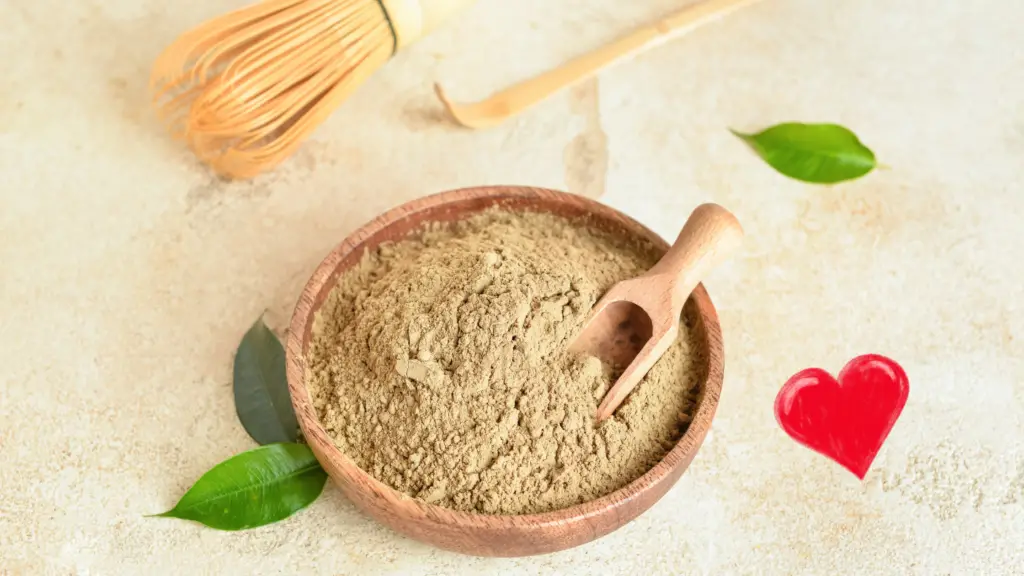
Hojicha stands out for its unique health benefits and distinctive flavor.
One of its most notable advantages is its naturally low caffeine content.
This makes it an excellent choice for those who want a soothing drink without the jittery effects of coffee or stronger teas.
Additionally, Hojicha is rich in antioxidants, which help combat oxidative stress in the body and promote overall wellness.
It’s also known to support digestion, as the roasting process that gives Hojicha its signature flavor makes it easier on the stomach than other green teas.
As for the flavor profile, Hojicha offers a nutty, roasted taste with subtle earthy tones.
It’s much less bitter than matcha, making it a mellow, enjoyable option for both tea lovers and those who are new to the world of Japanese teas.
Optional Variations

For those looking to switch things up, there are two great variations of the Dalgona Hojicha Latte to try.
First, the Iced Dalgona Hojicha Latte is a refreshing option, perfect for warm weather.
To make it, simply follow the original recipe but add a handful of ice cubes to your glass before pouring in the milk.
The ice helps cool the drink, while the creamy, whipped Hojicha still floats beautifully on top, creating a deliciously chilled latte with a frothy finish.
The second variation, Hojicha Dalgona Coffee, is ideal for anyone who enjoys both coffee and tea.
To make this version, prepare the traditional whipped Dalgona coffee using instant coffee, sugar, and hot water.
Then, brew a concentrated Hojicha base as you normally would.
In a glass, layer cold milk, and the Hojicha tea, and then top it off with the whipped coffee mixture.
Tips for the Perfect Dalgona Hojicha Latte
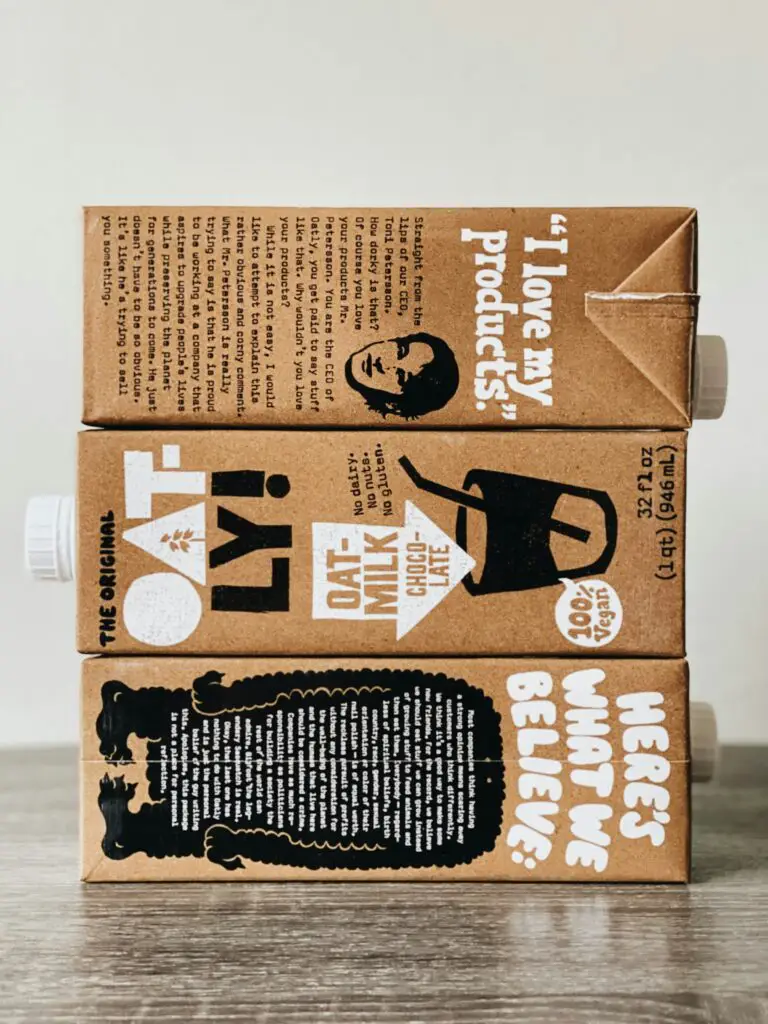
To ensure your Dalgona Hojicha Latte turns out perfect, there are a few key factors to consider.
First, choose a high-quality Hojicha powder for the best flavor.
Brands like Soar Organics and Ippodo Tea are known for their premium roasted green tea powders, which deliver a rich, nutty taste that’s essential for this drink.
Lower-quality powders may lack the depth of flavor that makes Hojicha so distinctive.
If you’re making a vegan version using aquafaba (the liquid from canned chickpeas), be sure to whip it properly to achieve the perfect foam.
Start by using cold aquafaba and a hand mixer, whipping on medium speed for about 5-7 minutes until stiff peaks form.
Aquafaba can be a bit more delicate than cream, but with enough time and patience, you’ll get that light, fluffy texture.
When it comes to milk alternatives, oat milk is a standout choice for its creamy texture and neutral flavor.
A great recommendation is Califia Barista Blend Oat Milk, which froths well and adds richness to your latte.
Other plant-based options like almond milk or soy milk can work too, but they may not offer the same level of creaminess.
For a smooth and balanced Dalgona Hojicha Latte, oat milk is often the preferred choice among plant-based options.
Common Mistakes and How to Avoid Them
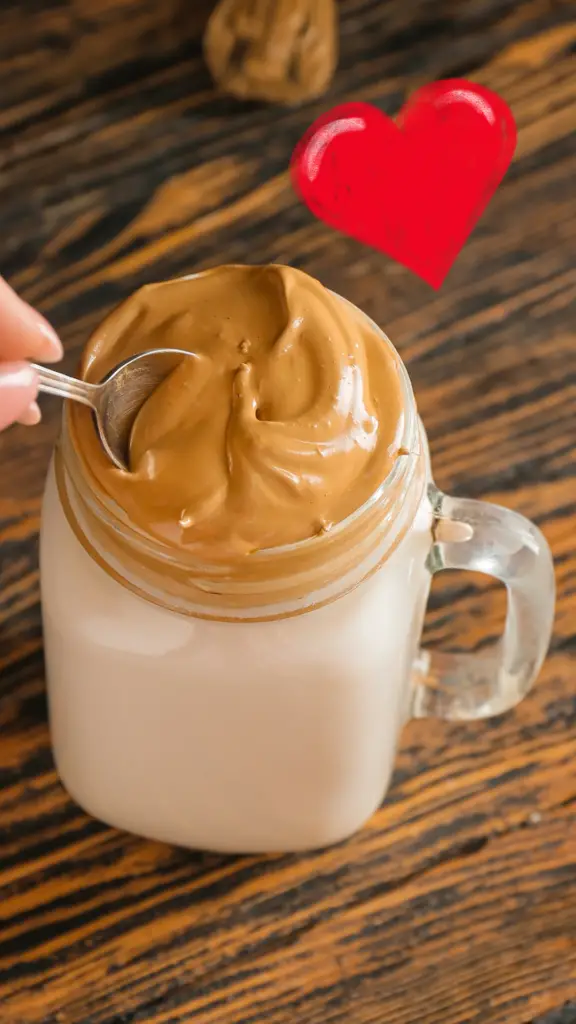
To achieve the perfect Dalgona Hojicha Latte, avoid these common mistakes.
Over-whipping or under-whipping the Hojicha foam can affect both texture and taste.
Over-whipping can cause the foam to become too stiff, while under-whipping leads to a runny consistency.
Aim for soft peaks by whipping the mixture for around 3-5 minutes, paying attention to the texture as you go.
Another mistake is using too much or too little Hojicha powder.
Using too much can make the latte too strong and overpowering, while too little may cause the roasted flavors to be lost.
Stick to the recommended 2 tsp of Hojicha powder for a balanced flavor.
Lastly, getting the temperature right is crucial when preparing the Hojicha base.
Do not use boiling water, as it can scald the delicate tea powder, resulting in a burnt or bitter taste.
Instead, use water heated to about 190°F (88°C) to bring out the optimal flavors of the roasted tea.
Conclusion
The Dalgona Hojicha Latte is simple to make and offers great versatility.
Whether you prefer it iced or paired with coffee, this drink is a delicious way to enjoy the rich, roasted flavor of Hojicha.
With just a few ingredients and some easy steps, you can whip up your own frothy latte in no time.
Try it at home, experiment with different variations, and don’t forget to share your unique creations!
FAQs
Can I use regular tea leaves instead of Hojicha powder?
No, regular tea leaves won’t work for this recipe.
Hojicha powder is finely ground and dissolves easily, which is essential for creating the whipped texture.
Using whole or loose tea leaves would result in an uneven mix and won’t provide the concentrated flavor needed for the foam.
What’s the difference between matcha and Hojicha?
The main difference is in the flavor and processing.
Matcha is made from green tea leaves that are stone-ground and has a vibrant, grassy taste.
Hojicha, on the other hand, is roasted green tea, giving it a smoky, nutty flavor with much less bitterness.
Hojicha is also much lower in caffeine compared to matcha.
How to store leftover whipped Hojicha foam for later use?
Leftover whipped Hojicha foam can be stored in the refrigerator for up to 24 hours.
To maintain its texture, place it in an airtight container.
Before using it again, give it a quick whisk to restore some of the fluffiness if it has settled.
